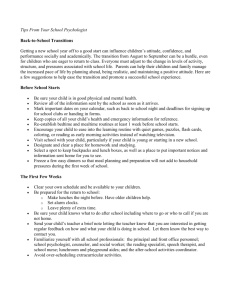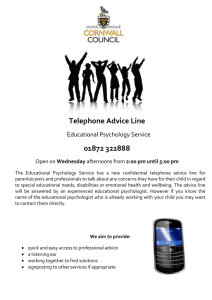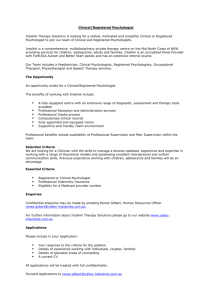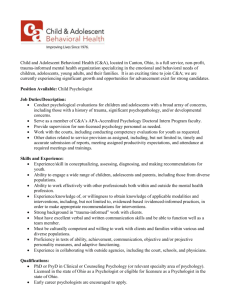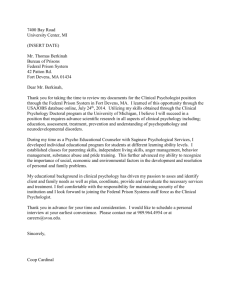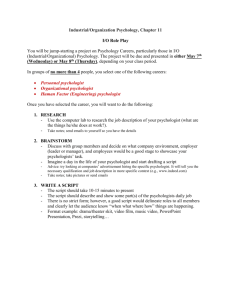Ch. 1-2 Vocab and Questions
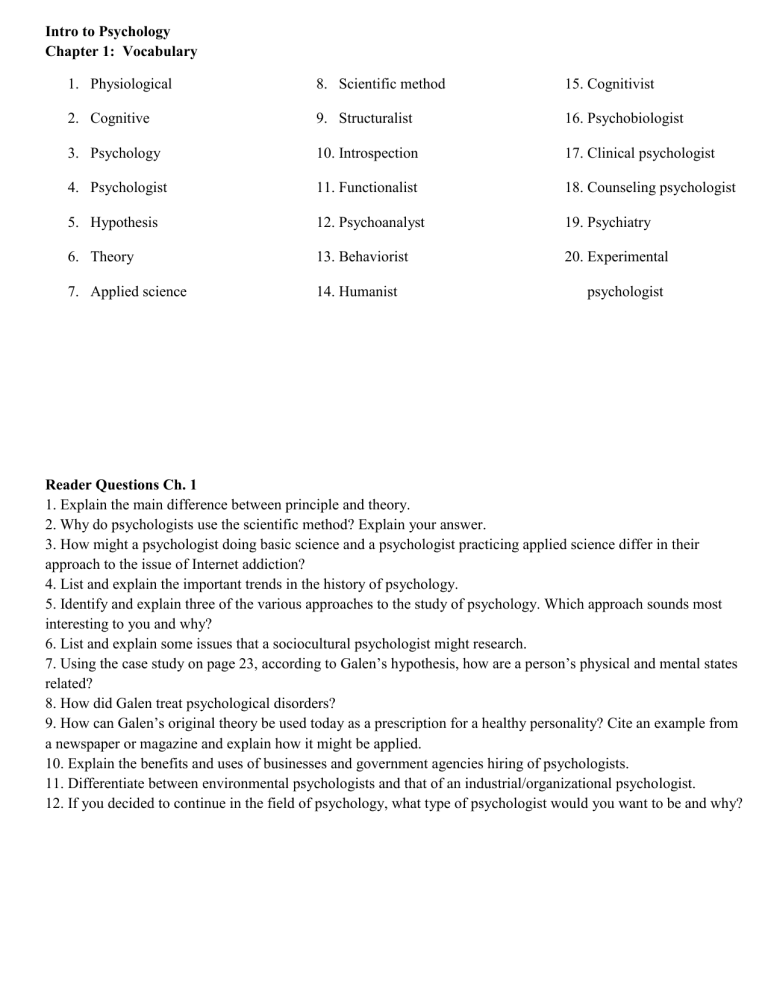
Intro to Psychology
Chapter 1: Vocabulary
1.
Physiological
2.
Cognitive
3.
Psychology
4.
Psychologist
5.
Hypothesis
6.
Theory
7.
Applied science
8.
Scientific method
9.
Structuralist
10.
Introspection
11.
Functionalist
12.
Psychoanalyst
13.
Behaviorist
14.
Humanist
15.
Cognitivist
16.
Psychobiologist
17.
Clinical psychologist
18.
Counseling psychologist
19.
Psychiatry
20.
Experimental psychologist
Reader Questions Ch. 1
1. Explain the main difference between principle and theory.
2.
Why do psychologists use the scientific method? Explain your answer.
3. How might a psychologist doing basic science and a psychologist practicing applied science differ in their approach to the issue of Internet addiction?
4. List and explain the important trends in the history of psychology.
5. Identify and explain three of the various approaches to the study of psychology. Which approach sounds most interesting to you and why?
6. List and explain some issues that a sociocultural psychologist might research.
7. Using the case study on page 23, according to Galen’s hypothesis, how are a person’s physical and mental states related?
8. How did Galen treat psychological disorders?
9. How can Galen’s original theory be used today as a prescription for a healthy personality? Cite an example from a newspaper or magazine and explain how it might be applied.
10. Explain the benefits and uses of businesses and government agencies hiring of psychologists.
11. Differentiate between environmental psychologists and that of an industrial/organizational psychologist.
12. If you decided to continue in the field of psychology, what type of psychologist would you want to be and why?
Intro to Psychology
Chapter 2: Vocabulary
1.
Sample
2.
Case study
3.
Survey
4.
Longitudinal study
5.
Correlation
6.
Hypothesis
7.
Variable
8.
Experimental group
9.
Control group
10.
Single-blind experiment
11.
Double-blind experiment
12.
Placebo effect
13.
Statistics
14.
Descriptive statistics
15.
Frequency distribution
16.
Normal curve
17.
Variance
18.
Standard deviation
19.
Correlation coefficient
20.
Inferential statistics
Reader Questions Ch. 2
1.
Describe the process of psychological research and the individual steps of the scientific method.
2.
List and describe the six different types of psychological research.
3.
Explain how a psychologist might select a sample for a survey.
4.
Review the pre-research decisions a psychologist must make.
5.
Explain why a psychologist should question the results of an experiment that they have conducted for the first time.
6.
What did Jane Goodall especially like about naturalistic observations?
7.
What behaviors previously thought to only be human did Goodall observe?
8.
Explain experimental procedures psychologists use to avoid bias.
9.
Explain how psychologists try to avoid the self-fulfilling prophecy.
10.
How can the expectations of the participants bias the results of an experiment?
11.
How can the expectations of the experimenter bias the results of an experiment?
12.
What does correlation tell about a relationship between two variables?
13.
Look at the “building skills” section on the bottom of page 57 and using the graphs, answer the five following questions: a.
What does each graph illustrate? b.
Which age group owns or uses the most cellular phones? c.
How has the number of cellular subscribers changed since 1988? d.
Do most cell phone owners talk on their phone while driving? What percentage never uses their phones while driving? e.
What arguments might these statistics be used to support or refute? Explain.
